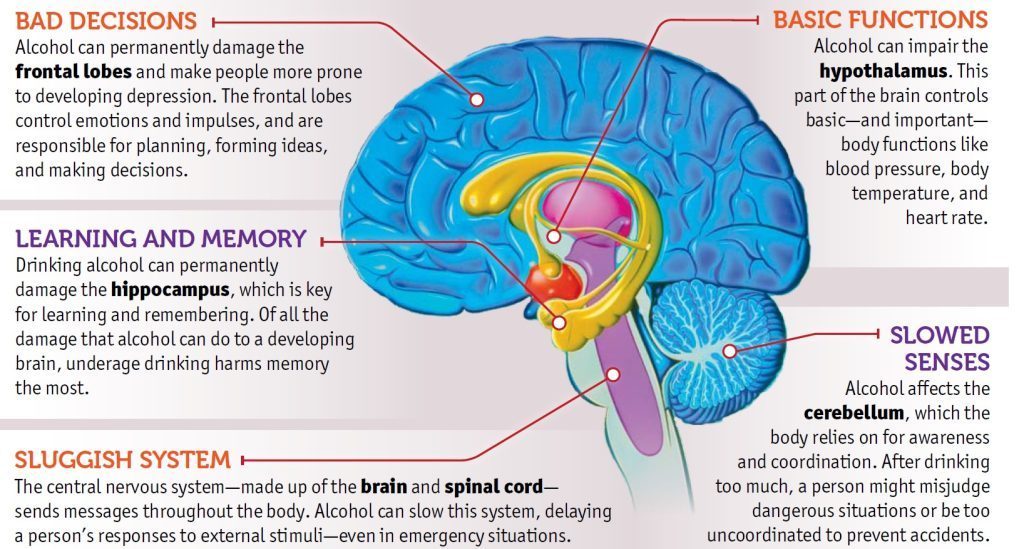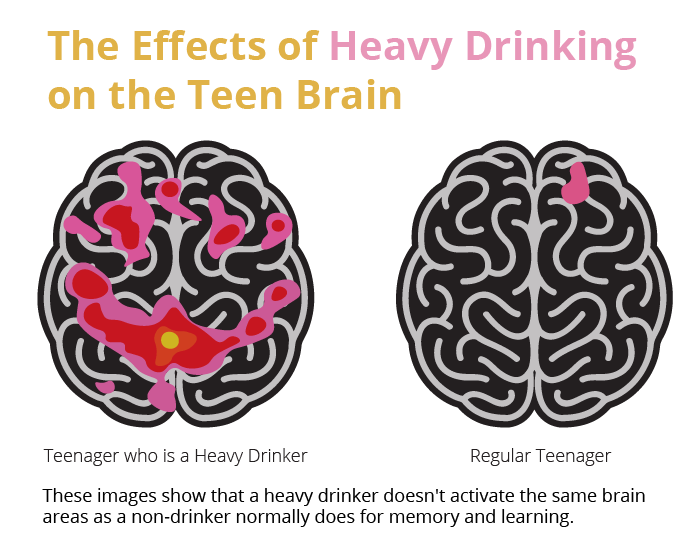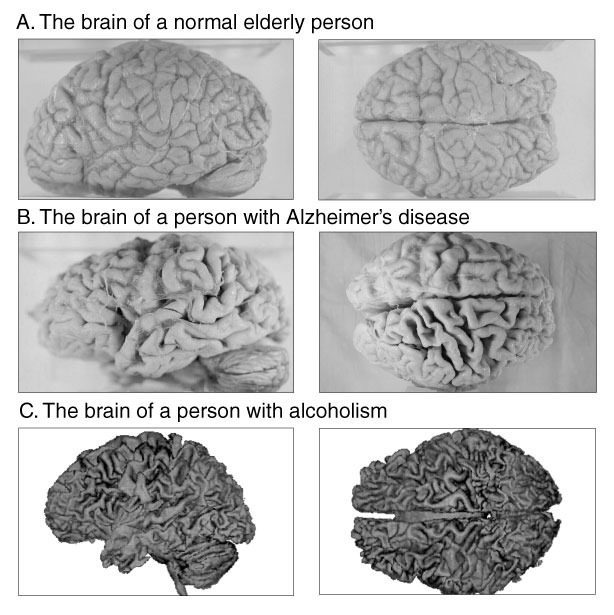
In moderation, alcohol can be helpful as a social relaxant. However, the effects of alcohol become more unpredictable when consumed in excess.
Actually understanding the effects that alcohol has on our body and our brain and how alcohol works is complex.
Most of us know that alcohol changes the way that we feel. It may make us feel more relaxed or happier, or perhaps, for some, angry or sad.
There is also the phenomenon of some people reacting very differently to alcohol from others. Once they start drinking, there is no telling when they will stop or what their behaviour or mood will be whilst under the influence.
Here, we look at how alcohol works on the human body and brain and why, for some people, drinking should be avoided at all costs.
To understand how alcohol works, it is important to know how the body processes alcohol. This can directly affect how it works for you as a person.
Your current organ health and lifestyle can greatly impact how you process it individually.
Those who suffer from compromised liver health and/or drink excessively will process at a much slower rate than those in good health who drink in moderation.
The longer it takes you to process alcohol, the longer toxins remain in your body, wreaking all kinds of damage to internal organs and your brain.
When consumed in moderation, on average, the human body can process 1 unit of alcohol per hour. This time is extended when a person binge drinks or has compromised liver health; the liver struggles to cope with the backlog of units that are consumed.
Once consumed, approximetly 20% of alcohol is absorbed directly into the bloodstream through the stomach’s lining. The rest (80%) is absorbed into the blood via the small intestines. (1)
Unlike food, alcohol is not digested. Instead, its chemical compound is broken down, and eventually, all traces leave the body.
Ethanol, the active ingredient in alcohol, quickly reaches the brain, bringing about the onset of effects within seconds of drinking it.
Having been diffused throughout the body’s organs and tissues, it finally reaches the liver after around 20 minutes post-ingestion. The liver then processes the alcohol so it can be dispelled from the body (2)
Whilst under the influence of alcohol, it works on our body, inducing several alcohol-related physical effects.
The effects produced by alcohol are mostly attributed to how it affects each part of the brain.

There are many other ways in which alcohol can affect a person physically and mentally; how alcohol works varies from person to person.
Alcohol leaves your system in several ways, hence why there are various testing methods.
Alcohol can be detected on the breath, in saliva, blood, urine and even hair. It also partially leaves the body through sweat.
How long alcohol stays in your system will be subject to several factors.
The human brain, in particular, is extremely vulnerable to alcohol’s effects and toxins.
Whilst alcohol is present in the brain, it kills off brain cells and damages tissues. The more alcohol you consume and the more frequently you consume it, the more damage is caused.
When alcohol is consumed in moderation, long-term effects on the brain are very minimal and unnoticed.
However, when alcohol is consumed excessively and frequently, the short-term and long-term effects on the brain can be very profound.
Alcohol is essentially a toxic drug in liquid form and a central nervous system depressant. Alcohol’s effects slow down the brain and body and impair its ability to function as it should.
When alcohol reaches the brain, carried via the bloodstream, mood and behaviour change; the more alcohol consumed, the more pronounced these changes are.
Alcohol abuse can have very negative effects on many parts of the brain that are essential for day-to-day function.
When alcohol is consumed in large quantities, information processed from our senses is slowed and distorted. This causes difficulty in thinking clearly and making safe and rational decisions.
Teenagers and young adults are particularly vulnerable to alcohol’s toxic effects.
Until age 25, the human brain is still forming and developing. Many individuals who go on to develop alcohol use problems, in particular alcoholism, start drinking at a young age.

Studies suggest that young people are prone to heavy bouts of drinking. This can heavily impact the brain’s development, causing effects that are felt later on in the person’s ‘drinking career’.
Alcohol use during developmental years increases many alcohol-related risks and illnesses associated with both the brain and the body, with cognitive ability and memory being crucially impaired (5)
Drinking alcohol to dangerous levels causes damage by destroying brain matter (tissues and cells) and how the brain communicates ( neurotransmitters and brain pathways). There are also many other ways in which alcohol can cause lasting brain damage.

Alcohol prevents the absorption of Thiamin (B1), which is an essential vitamin for healthy brain function. Our body cannot produce thiamine by itself, so reserves are drawn from our food.
Those who are alcohol dependent or drink heavily and frequently will have their thiamine levels heavily compromised. This is due to alcohol preventing the absorption of vital nutrients.
Thiamine deficiency can lead to Wernicke’s encephalopathy, which, if caught in time, is treatable. However, if the symptoms of Wernicke are not quickly and comprehensively treated and vitamin B1 levels restored, the brain can further deteriorate into a non-recoverable state known as Korsakoff’s Syndrome. Those with Wernicke’s Korsakoff’s ‘wet brain syndrome’ usually require medium to high levels of personal care for the rest of their lives.
Heavy alcohol use can also severely impair short term memory, leading to an increased risk of developing alcohol-related dementia. (6,7,8.9)
Alcohol dependence and alcohol addiction are the two most severe forms of alcohol use disorders.
Alcoholism, a chronic and progressive brain disorder, essentially develops through repeated exposure to alcohol and how alcohol works on that particular person’s brain.
Over time and with frequent drinking of alcohol, the brain adapts to enable it to function. This is known as tolerance. Once the brain has developed a tolerance to alcohol, the person affected will need to drink more and more alcohol to feel the sought-after desired effects. This is the start of the progression and can lead to alcohol dependence.
An alcohol-dependent brain will require a certain amount of alcohol constantly within the bloodstream. Anything less than what the brain has become accustomed to can result in alcohol withdrawal symptoms. Severe alcohol withdrawal is considered life-threatening.
Excessive alcohol intake can cause the brain to develop an addiction. Most who suffer from alcoholism eventually become alcohol dependent.
Once the brain has developed an alcohol addiction, it will rewire its pathways, prioritising alcohol above all else. The person affected will physically and mentally crave alcohol continually. They will have little or no control over their alcohol intake and continue to drink alcohol despite mounting negative consequences to their health, mental wellbeing, social life, personal relationships and occupation (10)
If you or a loved one need help with an alcohol problem, please get in touch with Rehab Guide today.
As a leading authority on addiction and addiction treatment, we will be able to advise you of the treatment required to help enable a full and lasting recovery from alcohol.
Alcohol is one of the most addictive and dangerous substances available, but it doesn’t need to ruin your life or the lives of those you love. Rehab Guide can help you find effective alcohol addiction treatment.
Given your circumstances, we are here to support you and your family in finding the best possible solution.
Contact us today for confidential advice and assistance at 02072052845
References :
1. How alcohol works on the body – Alcohol and your body. Student health outreach and promotion: https://shop.ucsc.edu/alcohol-other-drugs/alcohol/your-body.html
2. Timothy J. Legg, Ph.D., CRNP https://www.medicalnewstoday.com/articles/319942
3. Stephanie Watson “How Alcoholism Works” 8 June 2005.
a. HowStuffWorks.com. <https://science.howstuffworks.com/life/inside-the-mind/human-brain/alcoholism.htm> 15 November 2020
4 NIH -Marlene Oscar–Berman, Ph.D., and Ksenija Marinkovic, Ph.D. Alcoholism and the brain. https://pubs.niaaa.nih.gov/publications/arh27-2/125-133.htm
5. Susan F. Tapert, Ph.D., Lisa Caldwell, and Christina Burke, M.A. Alcoholrh27-2/125-133.htm and the adolescent brain – human studies
https://pubs.niaaa.nih.gov/publications/arh284/205-212.htm
6. Martin, P.R.; Singleton, C.K.; and Hiller–Sturmhöfel, S.H. The role of thiamine in alcoholic brain disease. Alcohol Research & Health 27(2):134–142, 2003.
7. (17) Victor, M.; Davis, R.D.; and Collins, G.H. The Wernicke–Korsakoff Syndrome and Related Neurologic Disorders Due to Alcoholism and Malnutrition. Philadelphia: F.A. Davis, 1989.
8. Martin, P. “Wernicke–Korsakoff syndrome: Alcohol-related dementia.” Family Caregiver Alliance Fact Sheet, 1998.
9. Cook, C. “The Wernicke–Korsakoff syndrome can be treated.” The Medical Council on Alcohol, vol. 19, 2000.
10. Drugabuse.gov https://www.drugabuse.gov/publications/media-guide/science-drug-use-addiction-basics